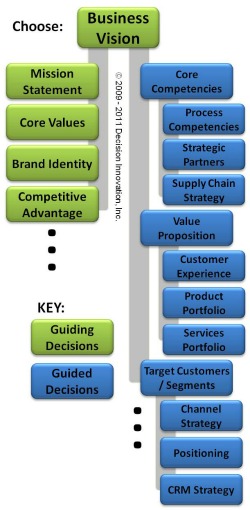
Manage Change for Innovation Results
Innovation management is critical to long term success
 In today's rapidly changing business environment, managing innovation effectively has become an essential requirement for staying competitive. Long term sustainability for a business may be determined by a company's ability to competently direct innovation resources to address a constantly changing market and economic environment.
In today's rapidly changing business environment, managing innovation effectively has become an essential requirement for staying competitive. Long term sustainability for a business may be determined by a company's ability to competently direct innovation resources to address a constantly changing market and economic environment.
What is innovation management?
Innovation management describes the decisions, activities, and practices that move an idea to realization for the purpose of generating business value. It is managing the investment in creating new opportunities for generating customer value that are needed to sustain and grow the business or company.
Generally, innovation investment focuses on the development of new products, services, or technologies. However, the types of innovation that can enhance business results go well beyond these, including changes to a company's business model. Identifying and making these investments successfully and repeatedly constitutes the key objective of innovation management.
Decisions critical to successful innovation
 Those involved with innovating will generally tell you that generating ideas is not the difficult part of being successful with creation and change. Numerous decisions will be made that impact the progression and ultimate success of good ideas. These good ideas need to be related to solving a real business problem or growing an opportunity. Questions that hint at these decisions include:
Those involved with innovating will generally tell you that generating ideas is not the difficult part of being successful with creation and change. Numerous decisions will be made that impact the progression and ultimate success of good ideas. These good ideas need to be related to solving a real business problem or growing an opportunity. Questions that hint at these decisions include:
- Is the potential innovation aligned with the business strategy?
- How does the proposed change generate value for the customer?
- What investment is required? Will the needed investment generate an acceptable return?
- What would be the impact of the innovation on the current business? Could it disrupt existing profits?
- How long will it take for the new concept to be realized and impact the business?
- How might the innovation change or disrupt current markets?
- Will the new concept generate new revenue or reduce costs?
- How will the innovation enhance existing or create new barriers to competition?
- Is there easy access to the competencies needed to realize the new concept?
Many of the decisions associated with innovation management are common to the choices associated with a new venture start-up. Conflicts created by some of these choices points to some of the dilemmas associated with disruptive innovation.
Requirements for managing innovation
 Having an innovation framework can be a key component to continuous effective change that increases the capability of the business to generate customer value. A critical part of this framework will be the decision making process that is used to funnel the potentially long list of ideas down to the critical few that will deserve investment. For large organizations, this is typically accomplished as part of a stage gate process, but multiple innovation models exist. Often these investments are considered as part of an overall business investment portfolio decision.
Having an innovation framework can be a key component to continuous effective change that increases the capability of the business to generate customer value. A critical part of this framework will be the decision making process that is used to funnel the potentially long list of ideas down to the critical few that will deserve investment. For large organizations, this is typically accomplished as part of a stage gate process, but multiple innovation models exist. Often these investments are considered as part of an overall business investment portfolio decision.
Innovation promotes the need for constant change and renewal, potentially impacting all areas of a business. Change is often resisted, necessitating appropriate incentives and rewards to promote needed innovation. Many of the most enduring innovations have required long term investment and staying power. This must be addressed as part of the organizational decision making approach if an innovative environment is to be sustained.
The desire to create long term competitive advantage will often lead to intellectual property and innovation being closely connected. As a result, innovation processes will often have requirements for generation of intellectual property that can protect advantages created by an innovation investment.
Benefits that come from managing innovation
Innovation management is quickly becoming a critical requirement for enabling a sustainable business. Some of the benefits for doing it well include:
- Improved timing for market introduction
- Ability to maintain or improve business margins
- Enabling access to new customers and markets
- Increased market share
- Improved and longer lasting competitive advantage
- Increased employee engagement and initiative
- Improved customer satisfaction
- Sustainable increase in shareholder returns
Follow these links for additional resources for managing change and innovation
Managing Change and Innovation
Manage change and organizational learning needed to innovate successfully.
Types of Innovation
Use innovation types to motivate improvements in business growth.
Innovation Model
Having an innovation model provides a thought framework for continuous business growth.
From Innovation Management to Decision-Making-Solutions Home

